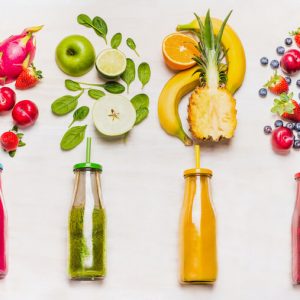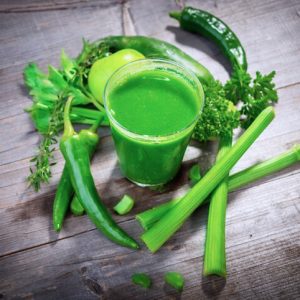
When it comes to herbal remedies, we can only speculate about our ancestors’ behavior, but clues and common sense tell us that they did, in fact, use plants to survive – whether for nourishment or medical treatment.
These plants were more than just food and medicine to those that preceded us. Plants not only healed but represented a connection to the supernatural world.
There are numerous studies that have investigated the diets of our distant cousins that have been unearthed in multiple sites throughout Europe (It is weird to me that bones of our ancestors have been ripped up, as it is similar to ripping up the graves of our own people, but I guess if your entire history has been erased for multiple decades, re-discovering who we were, and what plants we utilized is of some benefit – so that we can record and not mess up again next time).
With that being said, over 61 different taxa from 26 different plant families used by our descendants at 17 different archaeological sites have been found (1).
Among these plant foods and medicines included:
– Fennel (Foeniculum vulgare Mill.)
– Dates (Phoenix dactylifera L.)
– Yarrow (Achillea sp.)
– Wormwood (Artemisia sp.)
– Safflower (Carthamus sp.)
– Basketflower (Centaurea sp.)
– Yellowstone thistle (Cirsium ochrocentrum A. Gray)
– Chamomile (Matricaria chamomilla L.)
– Daisies like ragworts and groundsels (Senecio sp.)
– Birch tree leaves (Betula sp.)
– Bugloss (Echium angustifolium/judaeum)
– Wild radish (Raphanus raphanistrum L.)
– Nettle-leaf Goosefoot (plant in the amaranth family) (Chenopodium murale L.)
– Juniper berries (Juniperus sp.)
– Annual mercury (Mercurialis annua L.)
– Astragalus (Astragalus echinus L.)
– Marshmallow plant (Althaea sp.)
– Mallow (Malva sp.)
– Figs (Ficus carica L.)
– Pine (likely the fresh buds – high in vitamin C) (Pinus sp.)
– Wild grapes (Vitis vinifera ssp. sylvestris)
This gives us a pretty interesting insight in regards to what our ancestors used as plant food and medicine. From this list, we can gather what is medicine, and what would have been food (I decided to not include more foods, mainly because they were grain-based, but grains back in the day were much safer to consume than the Monsanto-modified versions that are supplied today).
The evolution of human-kind was largely based around utilizing herbal remedies to help with a variety of different ailments. That is, until these herbs were manipulated into forms that were more harmful – namely, pharmaceuticals.
Did you know that over 50% of the drugs in clinical use today contain natural products (and their derivatives and analogs)? These natural products are synthesized from plant compounds and bring up the question of why individuals suffering from illnesses are simply not provided with a prescription to eat these foods instead of given a chemical concoction of chemical pills with a component of said plant compounds.
It is hard to know how our ancestors determined which plants might have medicinal properties (although, trial and error was likely one approach). It’s also thought that they observed sick animals eating certain plants and determined that those plants must have a certain property worth exploring.
Since this time, scientific studies have verified the medicinal value of many plants. For example, Aspirin is derived from salicin, a chemical in the inner bark of willow trees that was used in ancient times for fever and pain.
These medicines were either ingested (such as in teas) or applied externally as a paste. Sometimes the plants were eaten as food or added to food or water. On occasion, a salve or poultice was applied to open wounds.
If you’re pregnant, check with your doctor and do plenty of research before using any of these. This list includes some medicines mentioned above (not all of them can be included as they are incredibly difficult to locate and get yours hands on), as well as other plants that have been utilized since time immemorial by the Indigenous people of Turtle Island (North America).
1. Fennel: this licorice-flavored plant is used in a tea or chewed to relieve coughs, sore-throats, poor digestion or a compromised immune system. It can also be used as a poultice for eye relief and headaches.
2. Yarrow: used for fever, common cold, hay fever, diarrhea, loss of appetite, menstrual problems or gastrointestinal discomfort. Some people chew the fresh leaves to relieve toothache. It can be made into a tea or eaten in a salad.
3. Wormwood: best used in dry form, can be made into an infusion or tea (no more than 1 teaspoon as it is very very strong). Great for digestion and has been shown to kill cancer cells. For intestinal concerns like worms or parasites, it is best taken in pill form.
4. Safflower: has been used historically to relieve constipation and respiratory problems. Safflower petals are also believed in Chinese medicine to stimulate blood circulation, reduce phlegm and heal fractures.
5. Chamomile: the leaves and flowers are used as a tea to treat intestinal problems and nausea. Also great for calming the body in times of stress and anxiety.
6. Ragwort: no longer taken internally, but the herb is still used as a poultice, ointment, or lotion applied to relieve pain and inflammation (such as rheumatoid arthritis, rheumatism, and sciatica).
7. Birch Tree Leaves: the leaves of the birch tree contain lots of vitamin C, which can be used to make medicine for infections of the urinary tract (like those that affect the kidney, bladder, ureters, and urethra). It is also used as a diuretic to increase urine output.
8. Bugloss: diuretic, demulcent, and pectoral. The leaves, especially those grown near the root, can be made into an infusion to relieve fevers, headaches, and nervous complaints – it helps relieve inflammatory pains.
9. Wild Radish: the young leaves can be eaten raw or cooked. The flowers can be eaten raw and are a nice addition to salads. It is used for skin conditions and stomach disorders.
10. Nettle-Leaf Goosefoot: the leaves are a great source of vitamin A and C, as well as calcium. The seeds are also edible. It is agreed that leaves are best eaten cooked and that raw leaves should only be eaten in small quantities.
11. Juniper Berries: contains at least three powerful anti-inflammatory agents, and just a few drops added to almond oil can bring relief when rubbed into arthritic joints. Juniper berries are also good for the urinary tract, but only one to two berries are enough per day!
12. Astragalus: a potent anti-inflammatory that helps boost the immune system and slows or prevents the growth of tumors. It can be used as a tincture, in capsules or tablets, or used topically for the skin. It can be used dried in tea as well.
13. Mallow: used traditionally as an herbal remedy for asthma, bronchitis, coughing, throat infections, and emphysema. It can also be used to treat wounds or infections of the mouth, throat, stomach, and intestines. A tea can be made from the leaves or flowers, or it can be made into a salve to be used topically.
14. Spruce Tips: high in vitamin C, can be harvested in the spring from spruce trees and will have a bright lime-green hue. These can be eaten (a few at a time), or made into a super-concentrated-vitamin-c tea!
15. Mullein: can be used as an infusion in tea. Used to treat inflammation, coughs, congestion and general lung afflictions. It is a common “weed” that is often seen growing outdoors.
16. Hops: as a tea, it is used to treat digestive problems and often mixed with other herbs or plants, such as aloe, to soothe the muscles. It can also treat toothaches and sore throats.
17. Aloe: a cactus-like plant with thick leaves that can be squeezed to extrude a thick sap. This jelly can be used to treat burns, insect bites, and wounds.
18. Aspen: the inner bark (xylem) is used in tea to treat fever, coughs, and pains. It contains salicin, which is also found in willow trees and is one of the main ingredients found in Aspirin.
19. Beeswax: can be used as a salve for burns and insect bites (like bee stings). Should only be used externally.
20. Blackberry: the root, bark, and leaves can be crushed into a tea to treat diarrhea, reduce inflammation and stimulate metabolism. As a gargle, it can treat sore throats, mouth ulcers and inflammation of the gums.
21. Black Raspberry: the roots of this plant can be crushed and used as a tea or boiled and chewed to relieve coughs, diarrhea or other intestinal distress.
22. Chokecherry: these berries (once pitted and dried and crushed into a tea) can be used to treat coughs, colds, flu, nausea, inflammation, and diarrhea. As a salve or poultice, it can treat burns and wounds.
23. Echinacea: also known as purple coneflower, is used to strengthen the immune system as well as fight infections and fever. It can also be used as an antiseptic, and is useful in treating the common cold, chronic coughs, and the flu.
24. Feverfew: can be ingested as a tea, chewed, or taken as a tincture. It is a great fever remedy and is a natural anti-inflammatory, helping with general pain, itching, and joint stiffness. It can also be used as a salve or poultice.
25. Goldenrod: can be used as a tea, as well as a topical salve. It helps treat conditions like bronchitis, chest congestion, colds, the flu, inflammation, and sore throats, and can be used as an antiseptic for cuts and abrasions.
26. Red Clover: this beautiful little flower grows everywhere, and the entire plant can be used – flowers, leaves, roots and all! It can be infused as a tea or eaten in salads. It is used to manage inflammation, improve circulation and treat respiratory conditions.
27. Rose Hips: the fruit of wild roses, a major source of vitamin C. Can be used to treat colds and coughs, intestinal distress, as well as inflammation. It is also a great antiseptic. They have very fine hair-like fibers in the middle, so make sure they are extremely dried out before using, and then grind them up in a food processor and shake the batch in a sieve to have the hairs fall loose. Best made as a tea.
28. Sage: a far-reaching shrub across much of North America. It is a natural insect repellant and can be used for anything digestive-related, as well as colds and sore throats.
29. Valerian: the root can be used as an infusion in a tea to relieve muscle aches, pain and is said to have a calming effect.
30. Rosemary: a member of the pine family, can be eaten as a food, as tea, or in essential oil. It is used to treat inflammatory muscle pain, as well as improve circulation and boost metabolism.
31. Slippery Elm: ground from the bark of the red elm tree. It is best made into a tea and can treat a number of digestive issues such as relieving constipation. It is a great treatment for gastroesophageal reflux disease (GERD), Chron’s disease, ulcerative colitis, irritable bowel syndrome (IBS), diverticulitis and diarrhea. It can even be used to treat breast cancer!
32. Chaga: this mushroom that grows on a tree is hearty and one of the highest antioxidant foods out there! It can be boiled into a tea (it takes about 40 minutes to boil down) and is used for immune system support (like fighting cancer), ulcers and gastritis, normalizes blood pressure and cholesterol levels, is a major anti-viral and can help improve one’s mood.
Of course, there are many more plant medicines out there, so this is not an all-inclusive list. Always be sure to research these herbs before use.
Other Sources:
https://www.botanical.com
http://www.cloverleaffarmherbs.com
https://dengarden.com








I have used most plants and there are of course those that give instant healing like Buffalo thorn when applied to cysts and boils without even going for 30 minutes and others of course take time for their effects to be seen or felt.